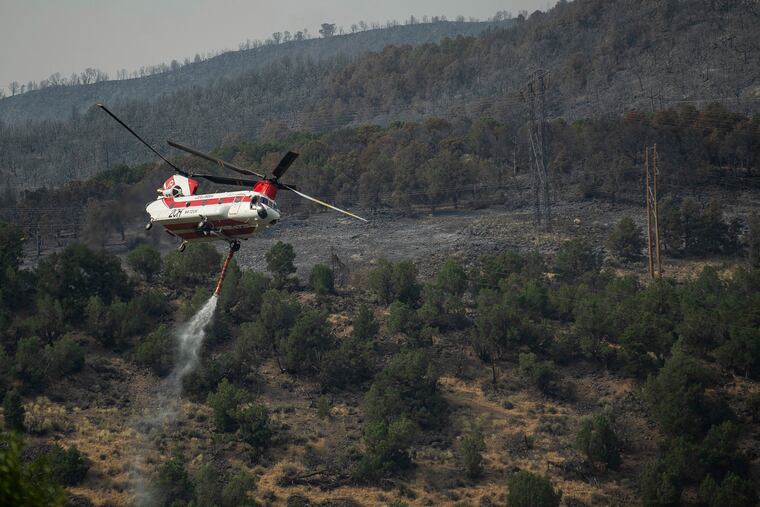Refueling tankers sustain Philadelphia region’s military leadership | Opinion
The U.S. Air Force's tanker fleet of KC-10s and KC-135s is decades old, with the majority dating back to President Eisenhower.

The Philadelphia area's pride and commitment to America's armed forces is unquestionable. Some of us earned that pride serving in the military where we got an up-close look at the rotorcraft Boeing builds at its Ridley Park campus outside Philadelphia.
After I left the Marine Corps, I spent 40 years of my life either on the Chinook production line in Ridley Park or building jet engines to support military aerospace. The Chinook is a multimission helicopter with heavy-lift capabilities that frequently transports troops and cargo in combat areas behind enemy lines. That often means taking the fight to the enemy far from U.S. military support operations. In those cases, military aircraft like the Chinook, military fighter jets, and even those massive bombers must rely on a fleet of refueling tankers to keep them flying.
>>READ MORE: Trump can save Philadelphia's refineries | Opinion
Unfortunately, the Air Force's tanker fleet of KC-10s and KC-135s is decades old, with the majority dating back to President Dwight Eisenhower. But with strong support from our area's congressional delegation, aerospace suppliers across the region are working hard to deliver the next-generation KC-46 refueling tanker to the military.
Refueling tankers like the KC-46 are military-grade flying gas stations that extend the operational range of America's military jets, rotorcraft, and transport aircraft. Boeing is building the new KC-46 using their highly successful 767 commercial jet platform.
But this is no ordinary passenger jet.
>READ MORE: With dearth of orders, Philly Shipyard's future is at risk
In a first for a refueling tanker, the KC-46 will feature two dynamic refueling systems capable of servicing multiple aircraft during the same tanker flight and eliminating the need for time-consuming reconfiguring on the ground. On top of these state-of-the-art refueling capabilities, the KC-46 features advanced defensive systems that allow the tanker to operate in higher-threat environments than legacy tankers.
Together, those assets extend the range of nearly every U.S. military aircraft around the world. The KC-46 can also double as a troop transporter, ship cargo, and even evacuate wounded soldiers.
>>READ MORE: Buying American can help keep the Philly shipyard afloat | Opinion
Boeing will deliver its first tanker to the Air Force later this year. Among the bases selected to receive a fleet of KC-46 tankers is nearby Joint Base McGuire-Dix-Lakehurst. This long-term employment guarantee will protect thousands of jobs in the region. That's as critical to the Delaware Valley as the combined $34 million in economic impact the tanker program delivers to New Jersey and Pennsylvania.
And just as important for the U.S. military, with the first delivery of the new KC-46, active and retired aerospace workers at Boeing's Ridley Park plant can continue rolling Chinooks off the line knowing they can operate practically anywhere on the globe.
Sean Stratton is a retired U.S. Marine. He spent 40 years building and maintaining aircraft. He helped build the civilian model of the Chinook and later worked on all facets of the Chinook as an assembler, mechanic, and then lead mechanic.